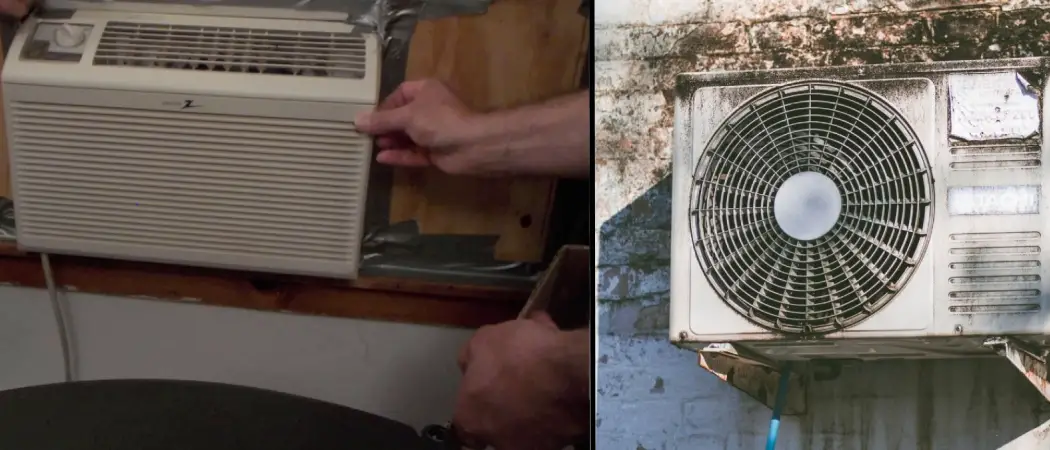Air conditioners installed in windows are a common source of entry for pesky bugs into homes. This issue can not only create an uncomfortable living environment but also lead to potential health risks.
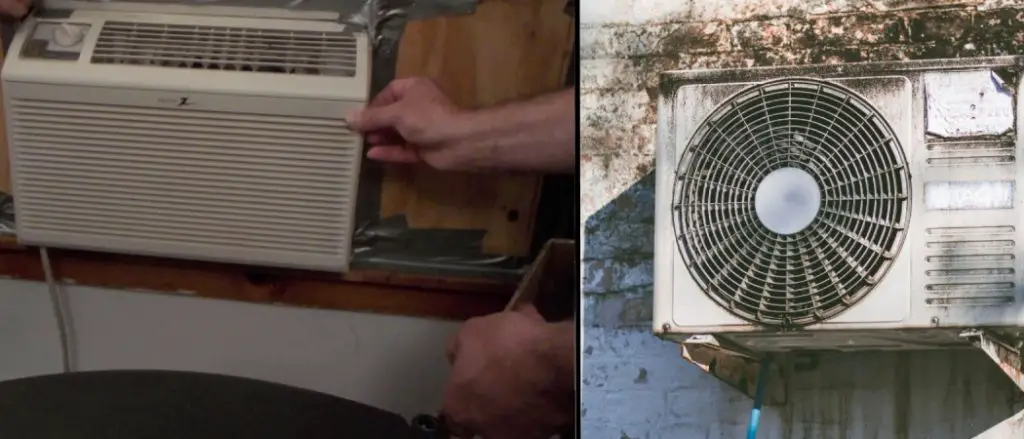
Therefore, sealing your window air conditioner becomes a necessity to maintain a bug-free home. This guide will provide you with an effective strategy and key steps to prevent insects from intruding through your window air conditioner unit.
Get ready to enjoy a cooler, bug-free indoor space. Keep on reading to learn more about how to seal window air conditioner from bugs.
Understanding the Problem
A. Identification of Common Bugs that Enter Through Window Air Conditioners
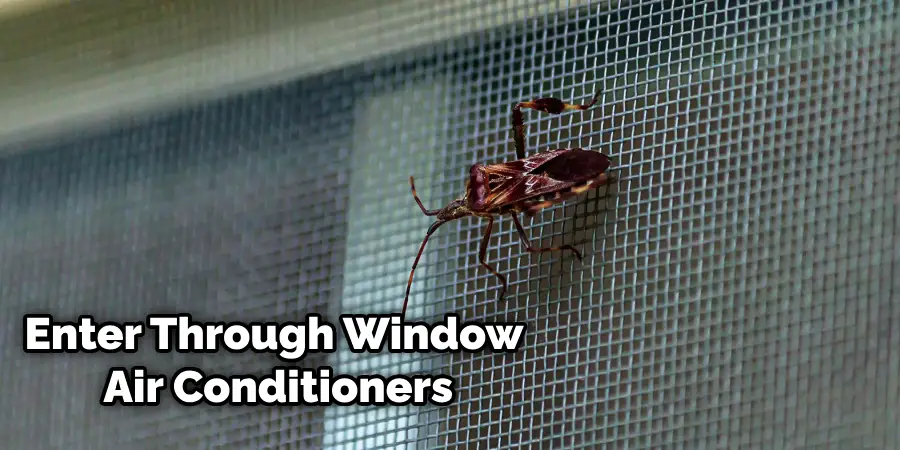
Several types of bugs are known to infiltrate homes through window air conditioner units. These can include small insects like mosquitoes and gnats, as well as larger pests such as cockroaches and spiders. It’s important to identify which bugs are getting in so you can tailor your measures to seal off their entry points effectively.
B. Potential Risks and Inconveniences Associated with Bug Infestations
Bug infestations can pose numerous problems ranging from health hazards to discomfort. Some bugs, like mosquitoes, can transmit diseases to humans. Cockroaches, while not directly harmful, can exacerbate respiratory issues like asthma and allergies. Moreover, these unwelcome guests can cause stress and unease, making your living spaces less comfortable.
C. Overview of the Impact on Air Conditioner Efficiency and Performance
In addition to the health and comfort issues, bug invasions can also affect the performance and efficiency of your air conditioner. Bugs can clog the filters, impair the cooling system and, over time, lead to wear and tear of the unit. This may result in a shorter lifespan for your air conditioner and increased energy expenses.
Assessing Your Window Air Conditioner
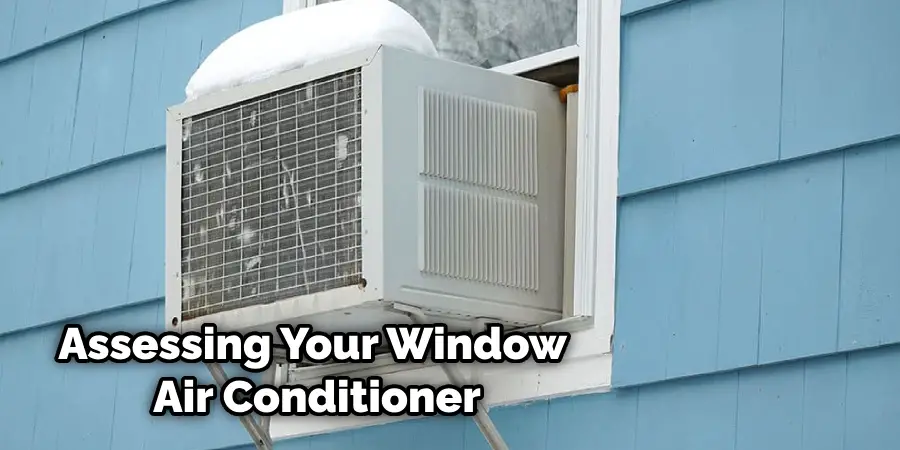
Before you can take steps to seal your window air conditioner from bugs, you’ll need to assess the current state of your unit and identify any potential entry points.
A. Checking for Gaps and Openings Around the Unit
1. Inspection of the Window Frame
Start by inspecting the window frame where your air conditioner is installed. Look for any cracks or gaps that could potentially allow bugs to enter your home. Pay close attention to the areas where the frame meets the wall, as these are often the most susceptible to damage.
2. Examination of the Accordion Panels
Next, take a look at the accordion panels on the sides of your air conditioner. These are designed to seal off the sides of the unit, but over time, they may become damaged or may not sit snugly against the window frame, creating gaps that can be an entry point for pests.
3. Evaluation of the Seal Between the Unit and the Window
Finally, check the seal between the air conditioner unit and the window. This area should be sealed tightly to prevent bugs from entering, but it’s common for this seal to break down over time or for gaps to form if the unit wasn’t installed properly. Carefully examine this area and note any spaces where bugs could potentially get through.
Selecting the Right Materials
Once you’ve identified any potential entry points, it’s time to gather the materials you’ll need to seal off your window air conditioner unit. Here are some options for effective sealing materials:
A. Weatherstripping Tape
This adhesive tape is specifically designed to create a tight seal between two surfaces and can be used around the edges of your window frame where there may be gaps. It comes in various sizes and materials, so be sure to choose one that is suitable for your particular needs.
B. Foam Insulation
Foam insulation can be used to fill in larger gaps around the window frame or accordion panels. It expands to create a tight seal and effectively blocks any potential entry points for bugs.
C. Silicone Caulking
Silicone caulking is another versatile material that can be used to seal cracks and gaps around your window air conditioner. It’s waterproof and weather-resistant, making it a good option for outdoor use.
Step-by-Step Guide on How to Seal Window Air Conditioner from Bugs
A. Preparing the Work Area
1. Clearing Debris and Cleaning Surfaces
Start by removing any dust, dirt, or debris from the window frame and the air conditioner unit. Use a soft cloth or a brush to clean the surfaces. This ensures that the sealing materials will adhere properly, creating an effective barrier against bugs.
2. Ensuring Proper Ventilation During the Process
It’s important to ensure proper ventilation in the room while you’re working, particularly if you’re using materials like silicone caulking. Open adjacent windows or use a fan to ensure a continuous flow of fresh air.
B. Applying Weatherstripping
1. Measuring and Cutting the Weatherstrips
Measure the length of the gaps around the unit and cut the weatherstripping tape according to these measurements. Always cut a bit longer than the measured length to ensure full coverage.
2. Proper Placement Around the Unit
Apply the weatherstripping tape along the gaps, pressing it firmly into place to create a tight seal. Pay particular attention to the sides of the unit where it meets the window frame.
C. Using Sealant for Gaps and Openings
1. Identifying Gaps that Need Sealing
Look for any gaps or openings that cannot be covered by weatherstripping alone. These might include larger gaps around the window frame or accordion panels.
2. Applying Sealant Effectively
Using a caulking gun, apply the silicone sealant to these gaps. Be sure to smooth it out for an even and effective seal. Allow the sealant to dry fully before moving on to the next step.
D. Addressing Accordion Panels
1. Inspecting and Cleaning Accordion Panels
Inspect the accordion panels for any damage and clean them thoroughly. Dirt or debris could prevent the foam insulation from adhering properly.
2. Applying Additional Measures for a Tight Seal
Use foam insulation to seal any gaps between the accordion panels and the window frame. Ensure the foam expands fully to create an effective seal.
E. Checking the Window Frame
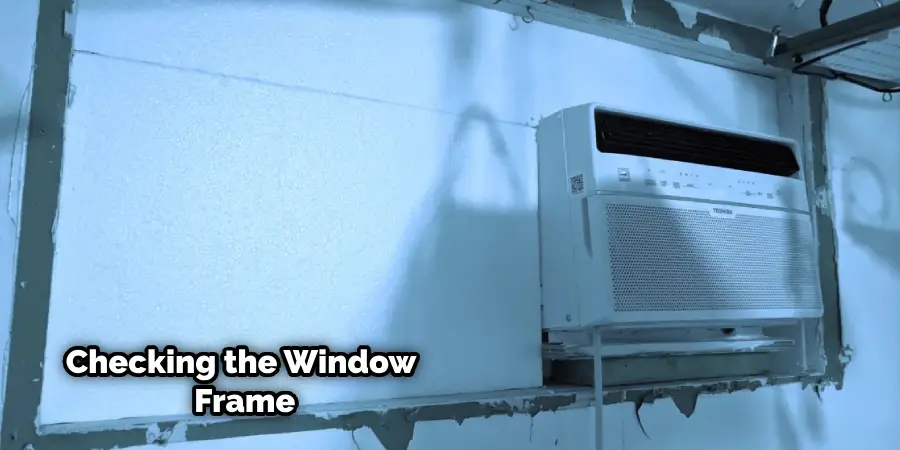
1. Assessing the Condition of the Frame
Examine the window frame carefully for any cracks or damage. These could be potential entry points for bugs.
2. Applying Appropriate Measures for Sealing
If you find any cracks in the frame, use silicone caulking to seal them. For smaller gaps, weatherstripping tape might be sufficient. Once all the seals are dry, your window air conditioner should now be bug-proof.
Tips and Tricks for Effective Sealing
A. Regular Maintenance
It’s important to regularly inspect and maintain your window air conditioner to prevent any damage that could create entry points for pests. Clean the unit and its surroundings regularly and address any issues promptly.
B. Proper Installation
If you’re installing a new air conditioner or moving an existing one, be sure to follow the manufacturer’s instructions carefully. This will ensure that the unit is installed properly and there are no gaps or openings for bugs to enter.
C. Using Additional Prevention Methods
Sealing your window air conditioner is just one step in preventing pests from entering your home. You can also use screens on your windows, keep doors closed when not in use, and use bug repellents or traps as additional measures.
Common Mistakes to Avoid
A. Using the Wrong Materials
It’s important to use sealing materials that are suitable for outdoor use and can withstand different weather conditions. Using cheap or unsuitable materials can lead to ineffective sealing and potentially damage your air conditioner unit.
B. Not Sealing Properly
Be sure to press the weatherstripping tape and foam insulation firmly into place, ensuring a tight seal. Leaving gaps or not properly smoothing out sealant can create entry points for bugs.
C. Forgetting to Seal All Potential Entry Points
Don’t overlook any areas where bugs could potentially enter, including the window frame and accordion panels. Be thorough in your inspection and sealing process.
Bug Prevention Strategies Beyond Sealing
A. Using Insect Screens
Insect screens provide an additional layer of protection against bugs. They can be installed on windows and doors to prevent bugs from entering while still allowing fresh air in. Choose a screen with small mesh sizes to effectively keep out even the smallest insects.
B. Keeping the Surrounding Area Clean and Free of Debris
Bugs are often attracted to areas with food and clutter. By keeping the area around your air conditioner clean and free of debris, you can reduce the chances of insects being lured to your window. Regularly sweep the area and remove any food particles, stagnant water, or waste that could attract pests.
C. Regular Maintenance and Cleaning of the Air Conditioner
Regular maintenance of your air conditioner can help prevent bug infestation. This includes cleaning the filter and the outdoor condenser unit, checking for any damage or blockages, and ensuring the unit is working efficiently. A well-maintained air conditioner is less likely to become a breeding ground for pests.
Benefits of Properly Sealing Window Air Conditioners
A. Prevention of Bug Infestations
The most obvious benefit of properly sealing your window air conditioner is preventing bugs from entering your home. This can help keep your living space clean, hygienic, and free of potential health hazards that come with insect infestations.
B. Improved Energy Efficiency
Sealing gaps around your air conditioner not only keeps bugs out but also helps improve energy efficiency. A tight seal can prevent cool air from escaping, allowing your unit to work more efficiently and potentially saving you money on electricity bills.
C. Longer Lifespan of the Air Conditioner
By preventing bugs from entering and causing damage, proper sealing can extend the lifespan of your window air conditioner. Regular maintenance and sealing can keep it in good working condition for longer, saving you from having to replace the unit prematurely.
Overall, properly sealing your window air conditioner not only helps keep bugs out but also improves energy efficiency and prolongs the lifespan of your unit. It’s a simple yet effective way to protect your home and investment.
Conclusion
Taking the time to seal your window air conditioner from bugs properly is a worthwhile investment in the long run.
By regularly inspecting and maintaining your unit, using suitable sealing materials, and considering additional prevention methods, you can keep insects out of your home and enjoy a cool, comfortable living space. Remember also to address any potential entry points around your window frame and to avoid common sealing mistakes.
With these tips and tricks, you can effectively seal your window air conditioner and enjoy a bug-free home. Thanks for reading this article about how to seal window air conditioner from bugs.

